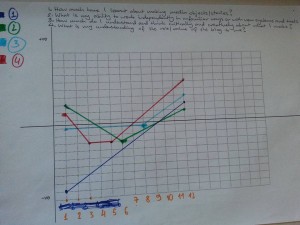I have not written anything since my last blog for Media 4. This brief is a good way to warm up my numb skull. Audio has been the element which appeals the most to me while watching a film. Sound makes up 50%-100% of a scene in cinema. Working with sound is not an easy task. I have encountered many valuable situation while working with sound for the last 2 years.
Sound is an essential element in both TV and radio Broadcasting. However, sound is often overlooked by inexperienced producers. From what I experienced while making the smoking documentary with my TV group, I suppose there is always a position for a sound person. The audio recorded directly from the camera was not usable. Fortunately, I recorded the audio separately with a Zoom H4n and a shotgun microphone. The separate audio was not the best, but it was definitely better than the one recorded with the camera. Most modern cameras have a screen or we can easily connect it to an external monitor. The camera man is not the only one who can monitor the visual. Recording audio on the field or on set is very important, so it should be handled by a sound person. Occasionally, we only have one chance to record an important interview but there are unwanted sounds in it such as car siren construct noise. That is where we need a skilled sound editor to fix it. Although it is not guaranteed that the audio is completely fixed, it is better than nothing.
Sound is even more critical in radio because it is the only way to communicate with audiences. The story itself is important, but it is the textual sound that makes the audience feels intimate to the piece. Janak Roger, an experienced radio producer, still needs a sound editor in the post-production for his works. In addition, the steady growth of radio listeners suggests a demand in radio producers.
The most difficult but rewarding task was when I took the role of a sound recordist and designer for my first short film. According to our plan, recording audio would be mainly onset since our main characters were children. Our team hoped to capture their unique emotions due to their playful nature. We were right about that, but it was more difficult than we had expected. To make the dialogue more natural, we did not ask them to say the script word by word. Let them play with the dialogue did give the natural sense as long as they kept key words and sentences. However, it raised unexpected problems when I was editing dialogues. The kids were coloring and talking at the same time when they play in the bedroom. It was nearly impossible to separate the dialogues with other sounds. I cut the raw files into “words” or even “letters” to make their dialogues more natural. It took me 70% of the time deal with dialogues. I put myself in the character’s shoes to feel what they actually hear.
The list is still going on, but this should be enough for a warm up. Hopefully, I will be inspired by something new in this semester. \
